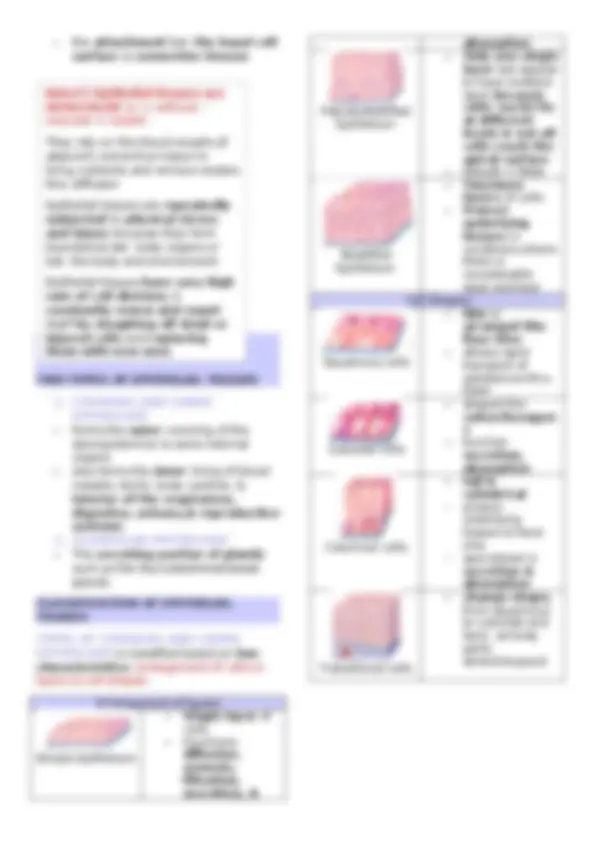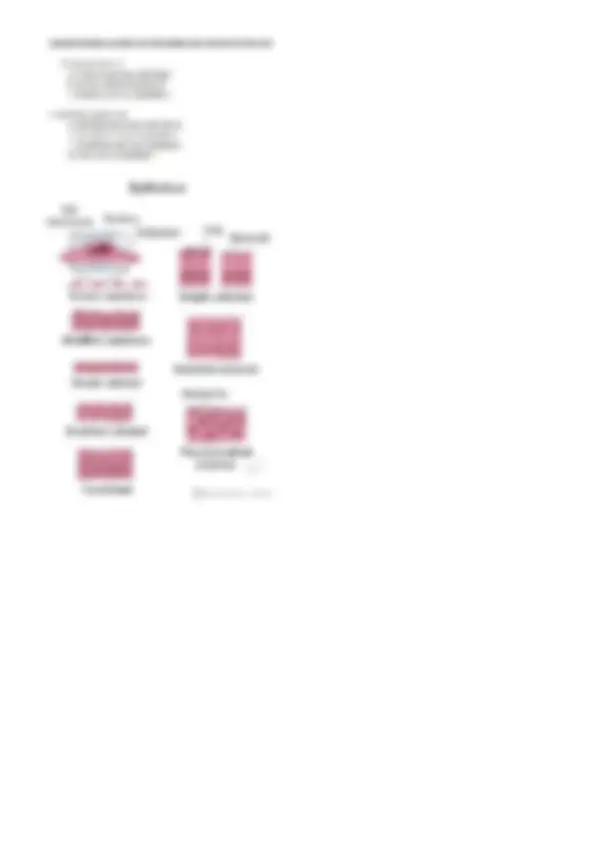




Study with the several resources on Docsity

Earn points by helping other students or get them with a premium plan


Prepare for your exams
Study with the several resources on Docsity

Earn points to download
Earn points by helping other students or get them with a premium plan
Community
Ask the community for help and clear up your study doubts
Discover the best universities in your country according to Docsity users
Free resources
Download our free guides on studying techniques, anxiety management strategies, and thesis advice from Docsity tutors
This lecture notes contain: - terminologies regarding body tissues - four basic types of tissues and their characteristics - five main types of cell junctions - the classification of tissues
Typology: Lecture notes
1 / 4

This page cannot be seen from the preview
Don't miss anything!



TISSUES – cells that work/grouped together Function: protection, support, communication HISTOLOGY – deals with the study of tissues PATHOLOGIST – scientist specializing in laboratory studies of cells and tissues Principal function: to examine tissues for any change that might indicate disease TYPES OF TISSUES AND THEIR ORIGIN